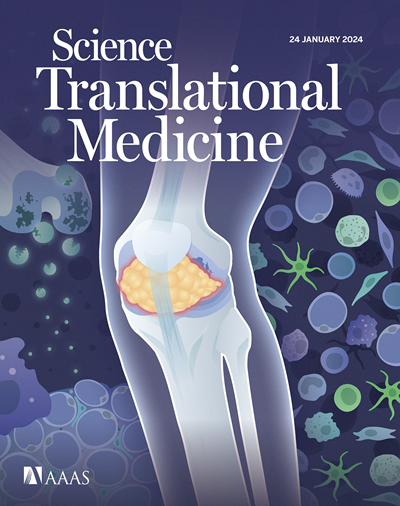Inclusion of a retroviral protease enhances the immunogenicity of VLP-forming mRNA vaccines against HIV-1 or SARS-CoV-2 in mice
IF 15.8
1区 医学
Q1 CELL BIOLOGY
引用次数: 0
Abstract
Messenger RNA (mRNA) has emerged as a highly effective and versatile platform for vaccine delivery. We previously designed a virus-like particle (VLP)–forming env-gag mRNA vaccine against human immunodeficiency virus–1 (HIV-1) that elicited envelope-specific neutralizing antibodies and protection from heterologous simian-human immunodeficiency virus (SHIV) infection in rhesus macaques. Here, we introduce a key technological advance to this platform by inclusion of mRNA encoding a retroviral protease to process Gag and produce mature VLPs. Appropriately dosed and timed expression of the protease was achieved using a full-length gag-pol mRNA transcript. Addition of gag-pol mRNA to an HIV-1 env-gag mRNA vaccine resulted in enhanced titers of envelope trimer-binding and neutralizing antibodies in a mouse model. Analogous results were obtained with a hybrid Gag-based, VLP-forming severe acute respiratory syndrome coronavirus 2 (SARS-CoV-2) mRNA vaccine expressing an engineered spike protein. Thus, inclusion of a retroviral protease can increase the immunogenicity of Gag-based, VLP-forming mRNA vaccines against human pathogens.
在小鼠中包含逆转录病毒蛋白酶可增强针对HIV-1或SARS-CoV-2的vlp形成mRNA疫苗的免疫原性
信使RNA (mRNA)已成为一种非常有效和通用的疫苗递送平台。我们之前设计了一种针对人类免疫缺陷病毒-1 (HIV-1)的病毒样颗粒(VLP)形成的env- mRNA疫苗,该疫苗在恒河猴中引发包膜特异性中和抗体并保护猴-人异种免疫缺陷病毒(SHIV)感染。在这里,我们介绍了一项关键的技术进步,通过包含编码逆转录病毒蛋白酶的mRNA来加工Gag并产生成熟的VLPs。使用全长gag-pol mRNA转录物实现适当剂量和定时的蛋白酶表达。在小鼠模型中,将gag-pol mRNA添加到HIV-1 env-gag mRNA疫苗中可提高包膜三聚体结合抗体和中和抗体的滴度。以gag为基础、形成vlp、表达工程化刺突蛋白的SARS-CoV-2 mRNA杂交疫苗也获得了类似的结果。因此,包含逆转录病毒蛋白酶可以提高基于gag的vlp形成mRNA疫苗对人类病原体的免疫原性。
本文章由计算机程序翻译,如有差异,请以英文原文为准。
求助全文
约1分钟内获得全文
求助全文
来源期刊

Science Translational Medicine
CELL BIOLOGY-MEDICINE, RESEARCH & EXPERIMENTAL
CiteScore
26.70
自引率
1.20%
发文量
309
审稿时长
1.7 months
期刊介绍:
Science Translational Medicine is an online journal that focuses on publishing research at the intersection of science, engineering, and medicine. The goal of the journal is to promote human health by providing a platform for researchers from various disciplines to communicate their latest advancements in biomedical, translational, and clinical research.
The journal aims to address the slow translation of scientific knowledge into effective treatments and health measures. It publishes articles that fill the knowledge gaps between preclinical research and medical applications, with a focus on accelerating the translation of knowledge into new ways of preventing, diagnosing, and treating human diseases.
The scope of Science Translational Medicine includes various areas such as cardiovascular disease, immunology/vaccines, metabolism/diabetes/obesity, neuroscience/neurology/psychiatry, cancer, infectious diseases, policy, behavior, bioengineering, chemical genomics/drug discovery, imaging, applied physical sciences, medical nanotechnology, drug delivery, biomarkers, gene therapy/regenerative medicine, toxicology and pharmacokinetics, data mining, cell culture, animal and human studies, medical informatics, and other interdisciplinary approaches to medicine.
The target audience of the journal includes researchers and management in academia, government, and the biotechnology and pharmaceutical industries. It is also relevant to physician scientists, regulators, policy makers, investors, business developers, and funding agencies.
 求助内容:
求助内容: 应助结果提醒方式:
应助结果提醒方式:


